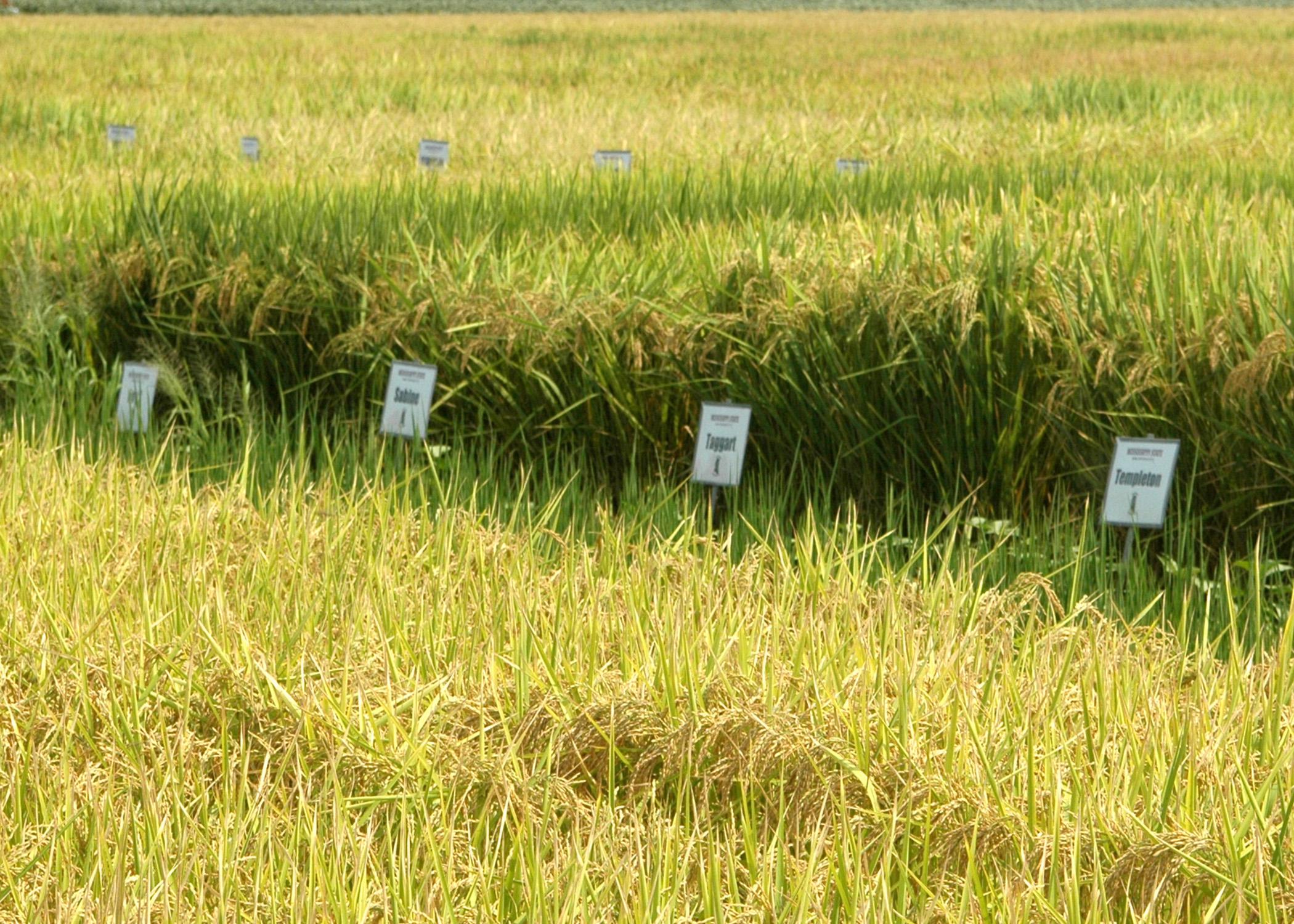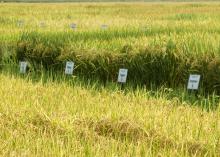Information Possibly Outdated
The information presented on this page was originally released on November 15, 2012. It may not be outdated, but please search our site for more current information. If you plan to quote or reference this information in a publication, please check with the Extension specialist or author before proceeding.
MSU center tests new rice varieties
By Dr. Rebekah Ray
MSU Delta Research and Extension Center
STONEVILLE – The rice breeding program at Mississippi State University’s 4,800-acre Delta Research and Extension Center is part of a regional program that tests the viability of experimental rice varieties.
MSU’s facility in Stoneville participates in the Uniform Regional Rice Nursery program, which tests new genetic material, called germplasm, in various environmental and growing conditions. Researchers at the Stoneville center test rice germplasm developed in-house or at the University of Arkansas, Louisiana State University or Texas A&M University.
“The URRN allows breeders at cooperating institutions to test experimental germplasm in multiple and diverse environments and gives an idea of germplasm stability in various environments,” said Tim Walker, a Delta Research and Extension Center agronomist, rice breeder and Mississippi Agricultural and Forestry Experiment Station researcher.
Each year the URRN includes a total of 200 entries from Arkansas, Louisiana, Texas and Mississippi. Because of the size of its rice breeding program, the Delta Research and Extension Center can submit up to 26 entries.
If a germplasm looks good near the end of its development at the Delta station, it may be submitted to the URRN for further evaluation. Scientists compare new entries to standard, commercially available varieties.
The URRN provides breeders with a wealth of information, such as germplasm performance, disease tolerance, resilience, environmental response and weed tolerance.
For example, this year, the URRN site in Crowley, La., suffered an outbreak of blast, a disease that affects rice production worldwide. The disease usually affects only leaves but in severe cases can prevent grain production.
URRN rice researchers visited Crowley to see how their varieties fared.
“Visiting Crowley during the outbreak helped us determine which germplasm was best at resisting blast,” Walker said. “Though this occurrence is unfortunate for producers because of yield loss, it provided valuable information for rice researchers and breeders.”
Host institutions evaluate germplasm by grain type, seedling vigor, plant vigor and heading, lodging, yield and ratoon yield, or second harvest in warmer regions with a longer growing season.
Plant pathologists and weed scientists at host institutions screen URRN entries for disease and herbicide resistance.
“Materials submitted to the URRN are tested for their disease reactions. Plant pathologists then rate the germplasm for disease tolerance,” said Tom Allen, Extension plant pathologist in Stoneville.
Allen introduces the sheath blight fungus into the URRN plants and evaluates the response of each of the germplasm entries. He observes how much of the disease is present in each plot and how severe it is.
Other MAFES researchers who have been involved with the URRN include weed scientist Jason Bond, plant pathologist Gabe Sciumbato, retired rice project leader Ted Miller and retired rice breeder Dwight Kanter.
Although MSU has been part of the URRN since the 1970s, when Donald Bowman led the station’s rice research program, it is one of the cooperative’s younger members. Additional URRN participants include the University of California-Davis, University of Missouri and the U.S. Department of Agriculture.







